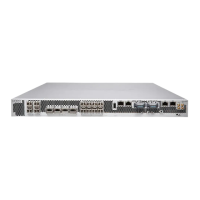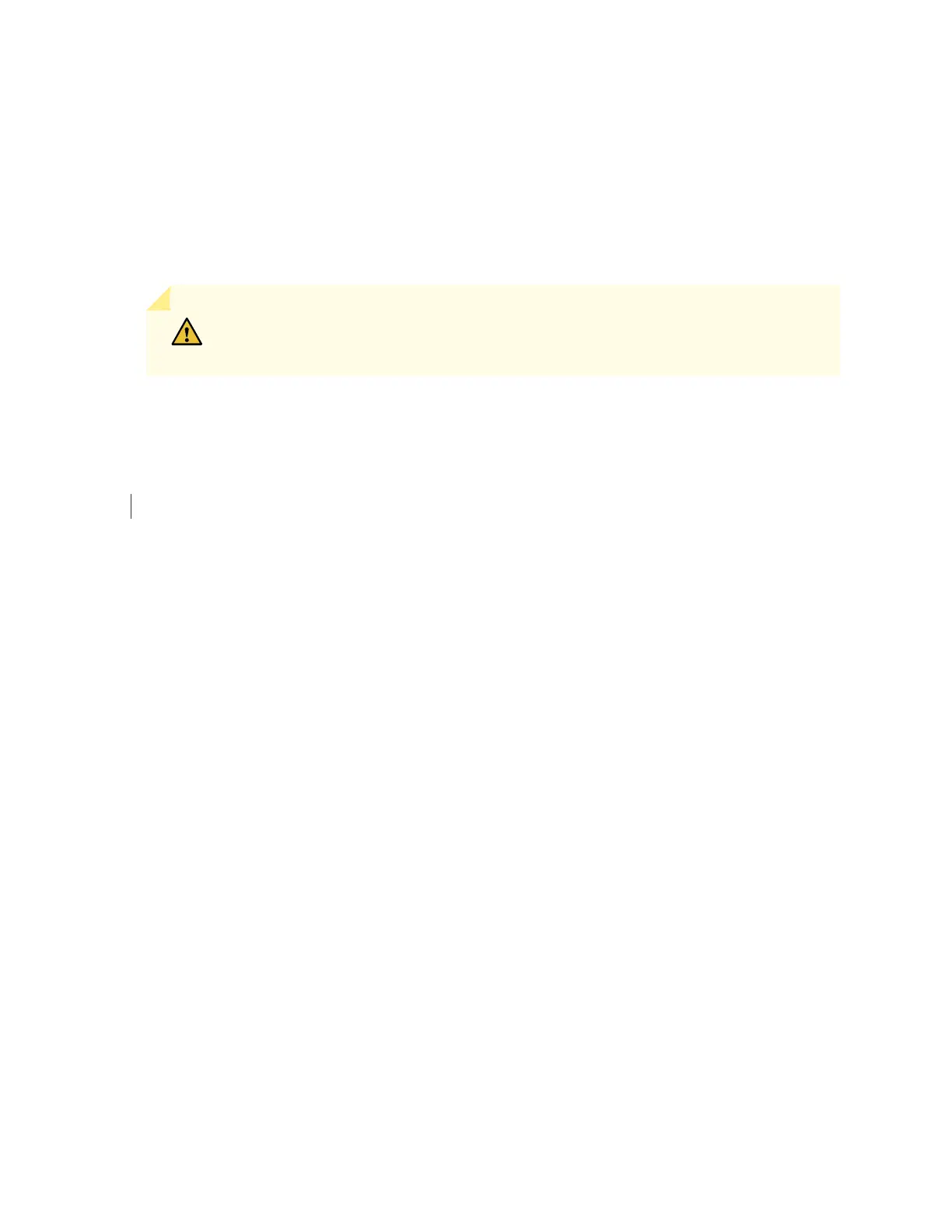7. Using your fingers, grasp the body of the transceiver, and pull it the rest of the way out of the interface
port.
8. Place a rubber safety cap over the transceiver.
9. Place the removed transceiver on an antistatic mat or in an electrostatic bag.
CAUTION: After removing a transceiver from the chassis, wait at least 30 seconds
before reinserting it or inserting a transceiver into a different slot.
SEE ALSO
Installing an SFP+ Transceiver | 118
Installing an SFP+ Transceiver
To install an SFP+ transceiver:
1. Wrap and fasten one end of the ESD grounding strap around your bare wrist, and connect the other
end of the strap to the ESD point on the chassis.
2. Take each transceiver to be installed out of its electrostatic bag, and identify the slot on the component
where it will be installed.
3. Verify that each transceiver is covered by a rubber safety cap. If it is not, cover the transceiver with a
safety cap.
4. Carefully align the transceiver with the slots in the component. The connectors should face the
component.
5. Slide the transceiver until the connector is seated in the component slot. If you are unable to fully insert
the transceiver, make sure the connector is facing the right way.
6. Close the ejector handle of the transceiver.
7. Remove the rubber safety cap from the transceiver and the end of the cable. Insert the cable into the
transceiver.
118

